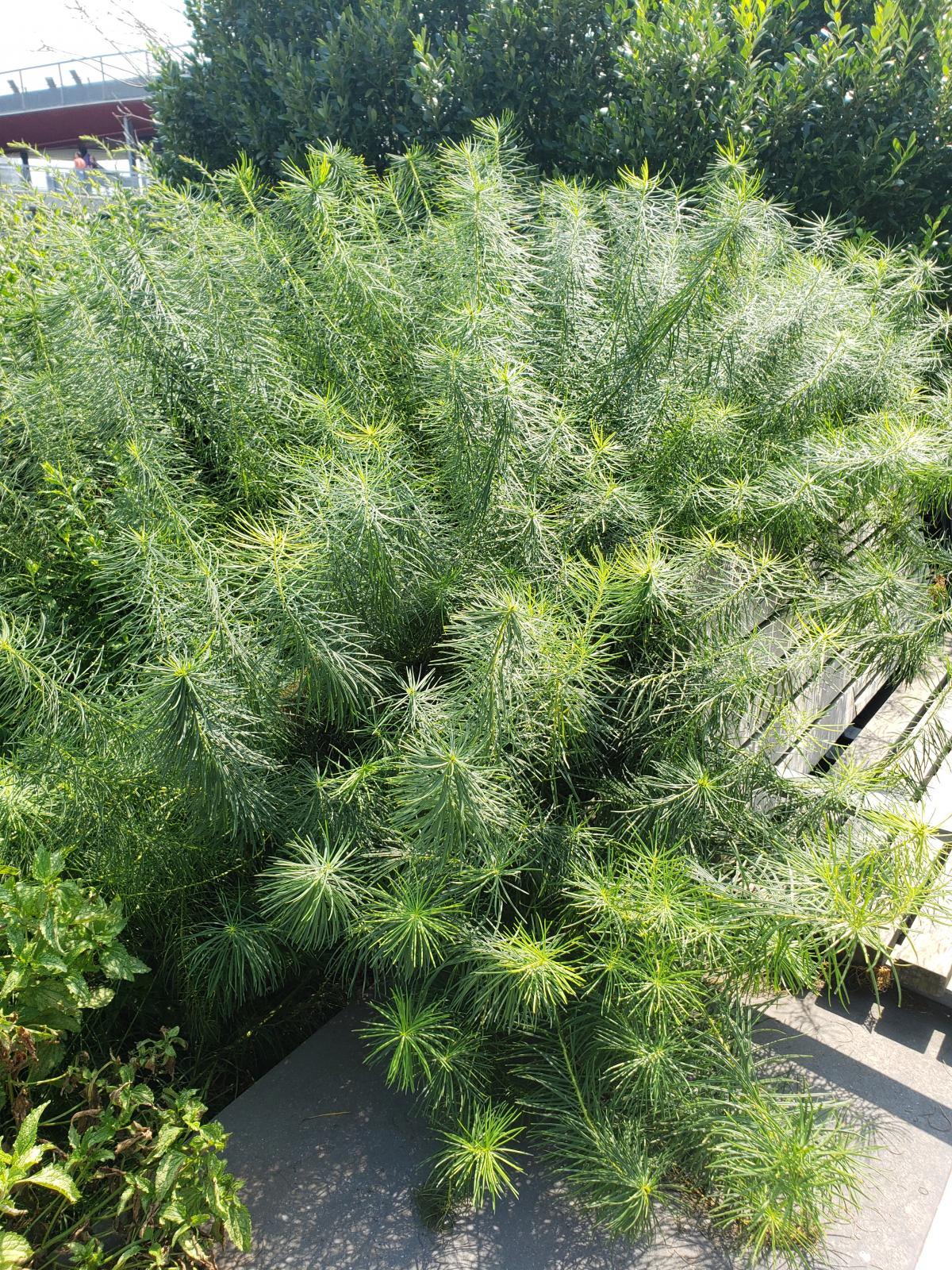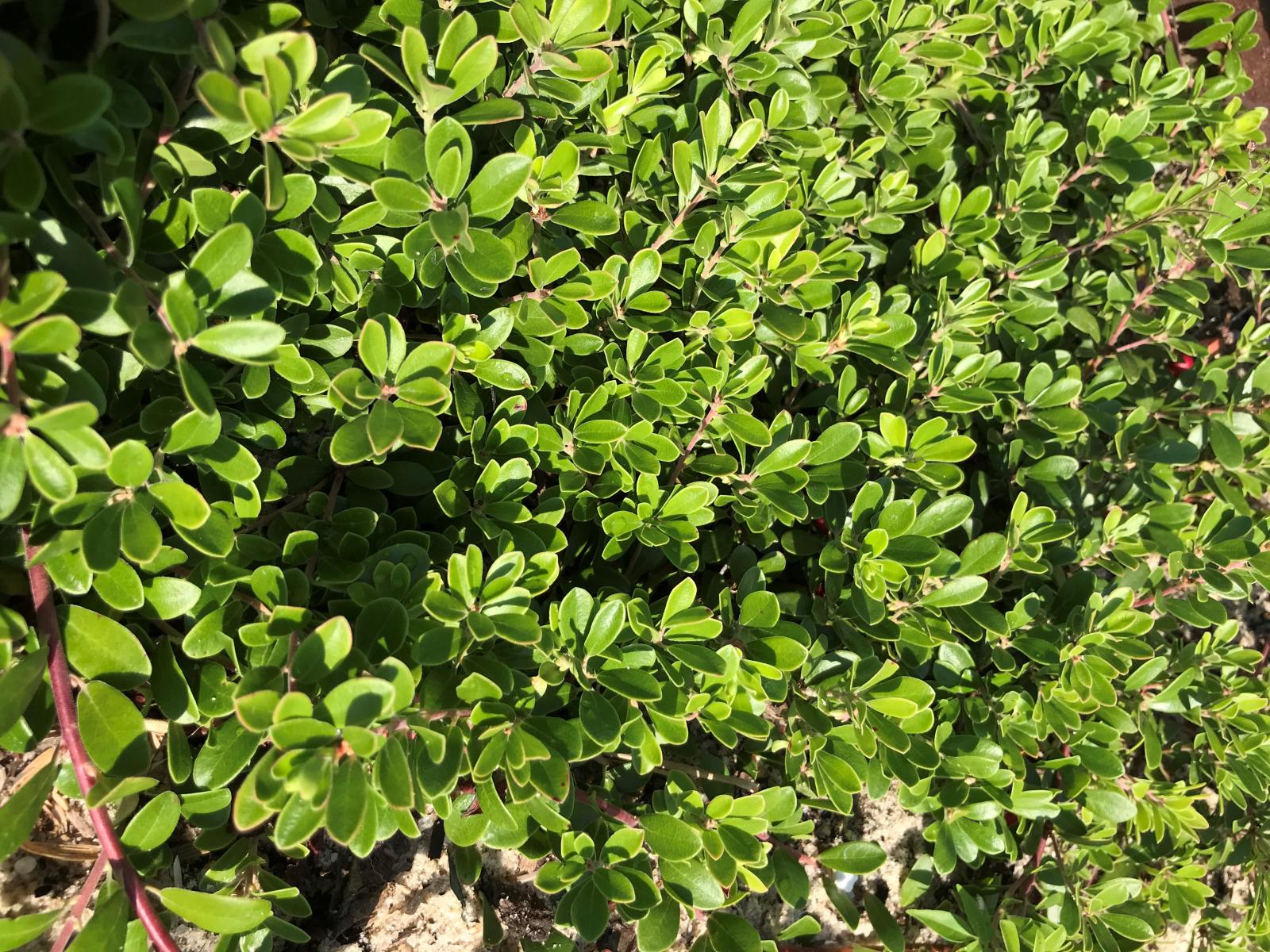Plant Finder
User Guidelines
The Plant Finder is a multi-faceted tool to assist designers, contractors, maintenance personnel, community groups and the general public in selecting plants that perform well within the public right-of-way. It expands on the lists included in previous versions of the Manual and should be used in conjunction with the guidance provided in the Landscape Chapter.
The Plant Finder database is not comprehensive and there is no guarantee that these plants will survive at a specific site. All plants within the public right-of-way must be selected based on site-specific conditions and approved by the appropriate agency or agencies with jurisdiction. Download the Plant Finder User Guide for instructions on how to use the tool.
The information in this database was generated by DOT, Parks, other agency staff, and local horticulture professionals based on their first-hand knowledge as well as from existing resources. Download the Plant Finder References page for a full list of sources.
Plant Basics
Characteristics
Tolerances
Common:
Robin Hill Apple Serviceberry
Scientific:
Amelanchier x grandiflora
'Robin Hill'Plant type:
Trees, ShrubHeight:
15-25 ftSpread:
15-25 ftShape:
Vase-Like UprightBloom:
 Color pink
Color pink  Color white
Color white Tinged with pink at first, but later fade to white. Larger blooms than other amelanchiers
Blooming period:
Mar - MayFruit:
 color green
color green color red
color red color blue
color blue color purple
color purple color black
color black Edible fruit starts out green, changing to red, and finally maturing to purple-blue-black in Summer. Resemble blueberries in appearance
Foliage:
 color green
color green Dark green, alternate, elliptic, serrated leaves about 2"-4" long
Fall:
 color red
color red color orange
color orangeLeaves turn an outstanding tomato-orange in the fall
Special Qualities:
Showy Blooms, Showy Fruit, Fall ColorLevel of Maintenance:
LowSeason of Interest:
Spring, Summer, FallLight:
Full Sun to Part ShadeSalt:
MediumpH:
Acid to Neutral (5.0-7.4)Soil:
Sand, Loam, ClayMoisture:
Dry to MedHardiness:
4a - 9b'Robin Hill' has a dense, upright form and is noted for its outstanding fall color.
Edible fruit may attract birds.
Common:
Apple Serviceberry
Scientific:
Amelanchier x grandiflora
Plant type:
Trees, ShrubHeight:
15-25 ftSpread:
15-25 ftShape:
RoundedBloom:
 Color white
Color white Showy, 5-petaled, slightly fragrant, white flowers in drooping clusters
Blooming period:
AprFruit:
 color green
color green color red
color red color blue
color blue color purple
color purple color black
color black Flowers give way to small, green berries which turn red and finally mature to a dark purplish-blue-black. Resemble blueberries. Edible
Foliage:
 color green
color green color orange
color orange color purple
color purple Finely toothed, obovate leaves emerge with a bronze-purple tinge in spring and mature to lustrous dark green in summer
Fall:
 color yellow
color yellow color red
color red color orange
color orangeYellow-orange to red fall color. Colors early and leaves fall early
Special Qualities:
Showy Blooms, Showy FruitLevel of Maintenance:
LowSeason of Interest:
Spring, Summer, FallLight:
Full Sun to Part ShadeSalt:
MediumpH:
Acid to Neutral (5.0-7.4)Soil:
Sand, Loam, ClayMoisture:
MedHardiness:
4a - 9aAmelanchier x grandiflora is a hybrid cross between A. arborea and A. laevis.
Root suckers are common.
Edible fruit may attract birds.

Common:
Hubricht's Bluestar
Scientific:
Amsonia hubrichtii
Plant type:
PerennialHeight:
2-3 ftSpread:
2-3 ftShape:
Upright ClumpingBloom:
 Color blue
Color blue Powdery blue, star-like flowers appear in terminal clusters in late spring atop stems rising to 3' tall
Blooming period:
Apr - MayFruit:
Ornamentally insignificant
Foliage:
 color green
color green Green, feathery, soft-textured, needle-like, alternate leaves. Very appealing. Cut back six inches following flowering to promote better growth
Fall:
 color yellow
color yellowExtremely attractive bright yellow-gold fall color. One of the signature features for this plant
Special Qualities:
Showy Blooms, Distinctive Foliage, Fall ColorLevel of Maintenance:
LowSeason of Interest:
Spring, Summer, FallLight:
Full Sun to Part ShadeSalt:
UnknownpH:
Acid to Alkaline (5.0-8.0)Soil:
Sand, Loam, ClayMoisture:
Dry to MedHardiness:
5a - 8aBest fall color occurs in full sun, but flowers last longer with some afternoon shade. Too much shade will cause the stems to flop over.
Collections:
- Median Plants
Common:
Bushy Bluestem
Scientific:
Andropogon glomeratus
Plant type:
Grass/Grass-likeHeight:
3-6 ftSpread:
2-3 ftShape:
ClumpingBloom:
 Color pink
Color pink  Color white
Color white Flower stalks rising up to 6' tall are topped by dense, fluffy, silvery-pink to white panicles
Blooming period:
Sep - FebFruit:
 color orange
color orange color brown
color brown Seed plumes are attractive
Foliage:
 color green
color green color blue
color blue Vibrant blue-green leaf blades growing 3-4' tall
Fall:
 color orange
color orange color brown
color brownAfter frost, the foliage and bushy panicles turn coppery-orange with the panicles softening into billowy plumes. Fall color persists well into winter. Cut plants back in late winter/early spring prior to new growth
Special Qualities:
Showy Blooms, Showy Fruit, Distinctive Foliage, Fall ColorLevel of Maintenance:
LowSeason of Interest:
Summer, Fall, WinterLight:
Full Sun OnlySalt:
LowpH:
Requires Acid (5.0-7.0)Soil:
Sand, Loam, ClayMoisture:
Med to WetHardiness:
5a - 9aOther:
Native, PollinatorUnlike most Andropogon spp. this plant thrives in moist areas and does not like to dry out. Prefers moist, fertile, loamy soils.
Common:
Windflower
Scientific:
Anemone x hybrida
'Honorine Jobert'Plant type:
PerennialHeight:
3-4 ftSpread:
1.5-2 ftShape:
Compact MoundedBloom:
 Color yellow
Color yellow  Color white
Color white Attractive single white flowers with 6-9 overlapping petals and yellow center stamens appear on graceful stems rising above the foliage
Blooming period:
Aug - OctFruit:
 color green
color green Flowers are followed by rounded seed heads at the end of the stems, although they rarely produce seeds
Foliage:
 color green
color green Trifoliate dark green leaves
Fall:
 color green
color greenFall blooming perennial. Leaves may blacken in winter; consider cutting the plant back in the fall
Special Qualities:
Showy BloomsLevel of Maintenance:
LowSeason of Interest:
Summer, FallLight:
Full Sun to Part ShadeSalt:
LowpH:
Acid to Neutral (5.0-7.4)Soil:
Loam, ClayMoisture:
Med to WetHardiness:
4a - 8a'Honorine Jobert' is a compact hybrid noted for its slightly cupped, pure white flowers and contrasting yellow stamens. Deer resistant.
May also be found in trade as Anemone japonica. 'Honorine Jobert' is synonyous with A. x hybrida 'Alba'.
Common:
Columbine
Scientific:
Aquilegia canadensis
Plant type:
PerennialHeight:
2-3 ftSpread:
1-1.5 ftShape:
UprightBloom:
 Color yellow
Color yellow  Color red
Color red Intricate drooping red and yellow bell-like flowers 5 spreading sepals and a mass of bushy yellow stamens; unique backward-pointed nectar tubes. Remove flowering stems after bloom to encourage additional blooms
Blooming period:
Apr - MayFruit:
 color green
color green color black
color black Flowers are followed by 5 pod-shaped follicles with long beaks containing numerous small black seeds
Foliage:
 color green
color green color blue
color blue Delicate, biternate, light-green to blue-green three-lobed leaves
Fall:
 color yellow
color yellow color red
color red color orange
color orangeOrnamentally insignificant. Foliage will turn yellow and sometimes red or orange in fall if soil conditions are right. Cut-back once the foliage begins to decline
Special Qualities:
Showy Blooms, Distinctive FoliageLevel of Maintenance:
MediumSeason of Interest:
Spring, SummerLight:
Full Sun to Part ShadeSalt:
MediumpH:
Acid to Alkaline (5.0-8.0)Soil:
Sand, LoamMoisture:
MedHardiness:
3a - 8aOther:
Native, PollinatorFlowers may attract hummingbirds and other pollinators.
Somewhat tolerant of urban pollution.

Collections:
- Acid-loving Plants
Common:
Common Bearberry
Scientific:
Arctostaphylos uva-ursi
Plant type:
Shrub, GroundcoverHeight:
0.5-1 ftSpread:
3-6 ftShape:
SpreadingBloom:
 Color pink
Color pink  Color white
Color white Miniature, drooping, urn-shaped, white-to-pink flowers in small terminal clusters
Blooming period:
Apr - MayFruit:
 color red
color red Rounded, berry-like fruits. Fruits ripen to a bright red, sometimes remaining on the plants throughout winter. Edible, but not particularly appealing to humans
Foliage:
 color green
color green Branchlets are clad with alternate, short-stalked, leathery, rounded-at-the-tip, obovate to spatulate, evergreen dark green leaves, which are shiny above, but paler beneath
Fall:
 color red
color red color brown
color brownLeaves turn bronze or a reddish color in winter before becoming green again in spring
Special Qualities:
Showy Fruit, EvergreenLevel of Maintenance:
LowSeason of Interest:
Spring, Summer, Fall, WinterLight:
Full Sun to Part ShadeSalt:
MediumpH:
Requires Acid (5.0-7.0)Soil:
Urban (rubble/fill), SandMoisture:
Dry to MedHardiness:
3a - 6bUsually grows well in poor infertile soils. Extremely winter hardy. Moderate to large scale ground cover with year round interest. Helps control soil erosion on slopes and hillsides. Effective when grown around shrubs, along sunny border margins, in naturalized areas and in native plant gardens.
Fruits are attractive to birds and other small mammals.
Collections:
- Plants for Movable Planters
Common:
Sea Thrift
Scientific:
Armeria maritima
'Alba'Plant type:
PerennialHeight:
0.25-0.5 ftSpread:
0.5-0.75 ftShape:
MoundedBloom:
 Color white
Color white Tiny, white flowers bloom in mid-spring in globular clusters (0.75-1" wide) atop slender naked stalks rising above the foliage. Deadhead to encourage additional blooms. Sporadic flowering can occur throughout the summer
Blooming period:
Apr - JunFruit:
 color brown
color brown Ornamentally insignificant
Foliage:
 color green
color green Stiff, linear, grass-like, dark green leaves (to 4" tall)
Fall:
 color green
color greenAs the plant is evergreen do not cut back like other perennials. Remove any dead leaves prior to new growth in spring
Special Qualities:
Showy Blooms, Distinctive Foliage, EvergreenLevel of Maintenance:
MediumSeason of Interest:
Spring, Summer, Fall, WinterLight:
Full Sun OnlySalt:
LowpH:
Acid to Neutral (5.0-7.4)Soil:
Urban (rubble/fill), SandMoisture:
Dry/DroughtHardiness:
4a - 8a'Alba' is noted for its grass-like foliage and globular white flower heads.
Best grown in infertile, dry, well-drained soils in full sun. Good drainage is essential. Slow-grower.
May attract butterflies.
Common:
Brilliant Red Chokeberry
Scientific:
Aronia arbutifolia
'Brilliantissima'Plant type:
ShrubHeight:
6-8 ftSpread:
3-4 ftShape:
Vase-LikeBloom:
 Color pink
Color pink  Color white
Color white Clusters of white to light pink, 5-petaled flowers appear in spring
Blooming period:
AprFruit:
 color red
color red Larger, abundant, glossy red fruits appear in dense clusters along the branches. Fruits ripen in late summer and persist well into winter. Edible
Foliage:
 color green
color green color silver
color silver More lustrous, glossy dark green leaves with a pubescent grayish-green underside. Elliptic to obong to obovate leaves growing up to 3.5" long
Fall:
 color red
color redOne of the best shrubs for brilliant fall color. This cultivar is noted specifically for its brilliant red fall color
Special Qualities:
Showy Blooms, Showy Fruit, Distinctive Foliage, Fall ColorLevel of Maintenance:
LowSeason of Interest:
Spring, Summer, FallLight:
Full Sun to Part ShadeSalt:
MediumpH:
Acid to Alkaline (5.0-8.0)Soil:
Sand, Loam, ClayMoisture:
Dry to WetHardiness:
4a - 9aOther:
NativeMore commonly found than the species. 'Brilliantissima' is most noted for its attractive glossy red berries and red fall foliage color. It differs from the species by being more compact, producing more lustrous foliage with superior red fall color, and producing larger, glossier and more abundant fruit.
Good substitute for Euonymus alata.
Common:
Red Chokeberry
Scientific:
Aronia arbutifolia
Plant type:
ShrubHeight:
6-10 ftSpread:
3-6 ftShape:
Vase-Like UprightBloom:
 Color pink
Color pink  Color white
Color white Clusters of white to light pink, 5-petaled flowers appear in spring
Blooming period:
AprFruit:
 color red
color red Abundant, glossy, 0.25" diameter red fruits appear in dense clusters along the branches. Fruits ripen in late summer and persist well into winter. Edible
Foliage:
 color green
color green color silver
color silver Glossy dark green leaves with a pubescent grayish-green underside. Elliptic to obong to obovate leaves growing up to 3.5" long
Fall:
 color red
color red color orange
color orange color purple
color purpleOne of the best shrubs for brilliant fall color. Intense, shiny, raspberry to crimson, with purplish highlights. Can also have some orange mixed in, especially in shady sites
Special Qualities:
Showy Blooms, Showy Fruit, Distinctive Foliage, Fall ColorLevel of Maintenance:
LowSeason of Interest:
Spring, Summer, FallLight:
Full Sun to Part ShadeSalt:
MediumpH:
Acid to Alkaline (5.0-8.0)Soil:
Sand, Loam, ClayMoisture:
Dry to WetHardiness:
4a - 9aOther:
NativeBest when massed together or the plant can become leggy.
Grows best in moist soil, but tolerant of dry conditions once established.
Good substitute for Euonymus alata.

